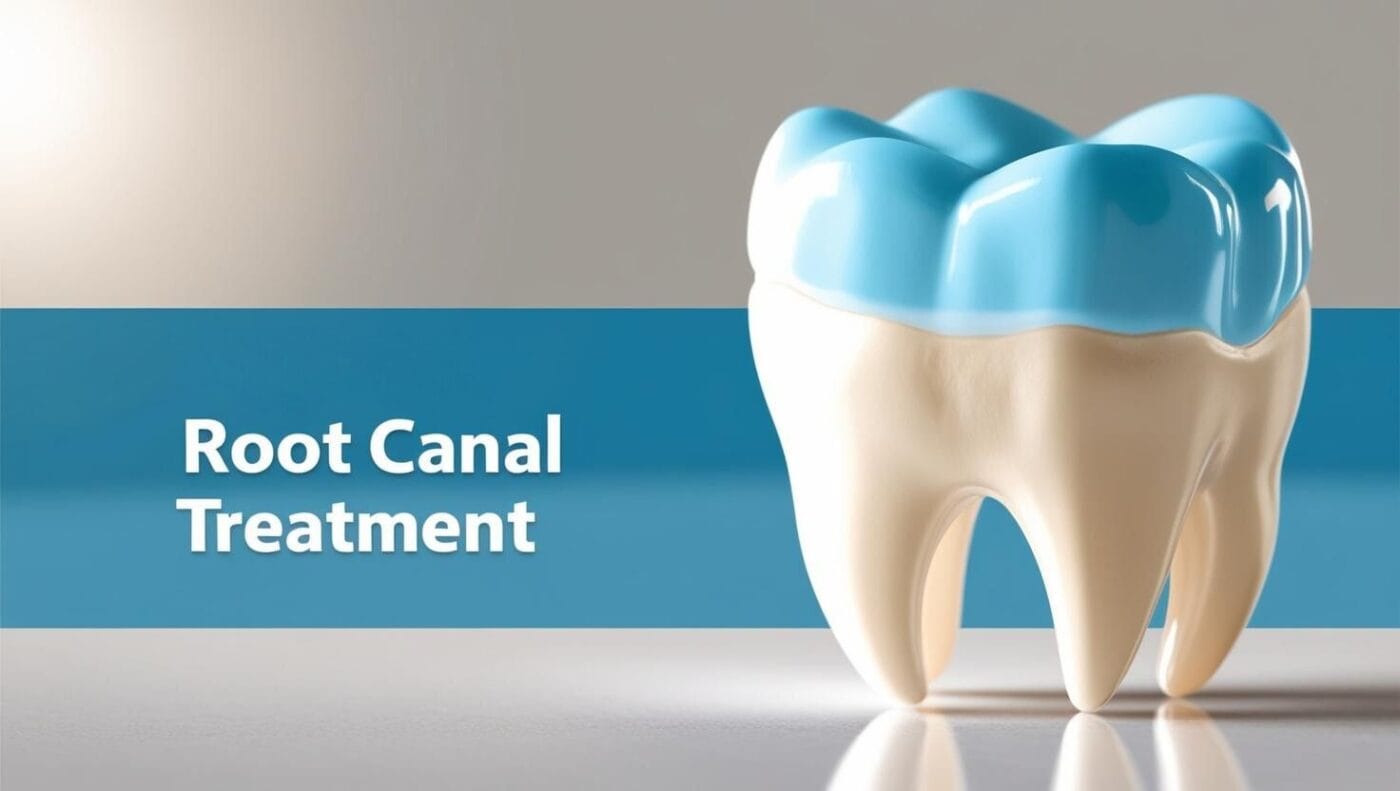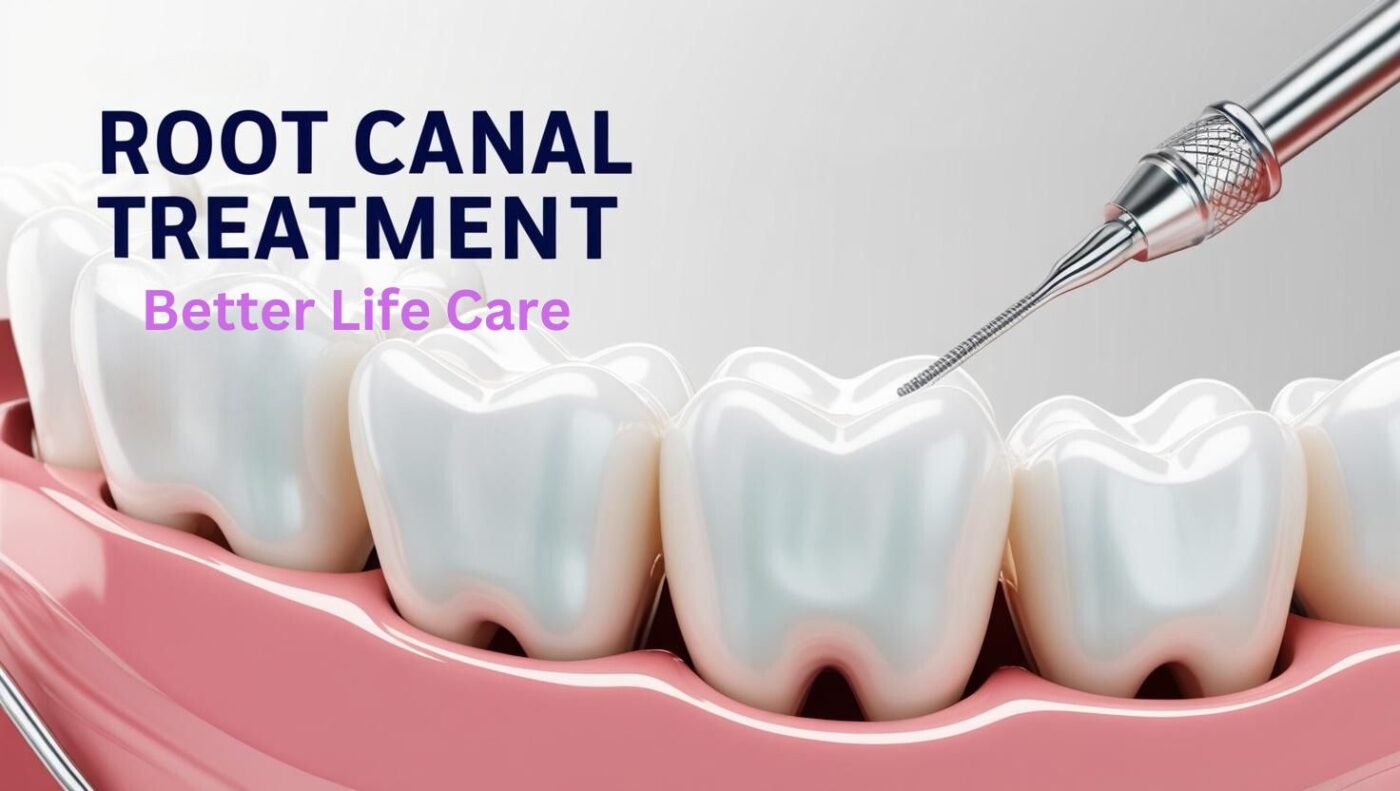Root canals make you think they are so painful. Skipping it? That’s the real pain, and you’re not going to like it as much as you think.
The root canal’s gotten a bad rap, and despite what you may have heard, it often doesn’t hurt. It’s not as dramatic as the reality is. Although they can be somewhat uncomfortable, modern root canal treatments are quick and efficient procedures that will help save your natural teeth. From your throbbing toothache to deep cavities, a root canal relieves the pain and saves your oral health.
But first, here in this blog, we’ll break down what a root canal is, why you might need one, and what to expect before, during, and after the procedure. But today, I’d like to set the record straight on just about one of the most misunderstood dental treatments in the history of dental marketing.
Let’s start with the basics.
A root canal is a dental procedure used to save a tooth that is infected or damaged. The process involves removing the damaged or infected tissue inside the tooth and replacing it with a filling. This helps to prevent further damage or infection and allows you to keep your natural tooth.
Reasons for needing a root canal
Why is a root canal necessary today? Your tooth may need to be extracted if the root canal is not performed. The loss of a tooth can have major implications on your oral function and quality of life.
It may also stop you from eating or speaking and push the surrounding teeth out of their proper alignment. A root canal can save the tooth and help you keep your natural smile and maintain good oral health.

When would you need a root canal? The most common reasons are tooth decay, trauma to the tooth, and gum disease.
Tooth decay results when bacteria in your mouth make an acid that eats away at the enamel and dentin of your tooth. The bacteria can get to the pulp (the soft tissue within the tooth) and infect it if not treated.
An infection can also happen due to trauma to the tooth – such as a crack or chip. Gum disease, at last, also can make the gums pull away from the teeth, forming pockets where bacteria can build up and cause an infection.
Symptoms of needing a root canal
If you’re experiencing any of the following symptoms, you may need a root canal:
- Toothache
- Sensitivity to hot and cold foods and drinks
- Swelling and tenderness in gums
When these symptoms occur, they could be caused by several dental issues, and it is important to be seen by a dental professional who can diagnose what is causing the problem and recommend a solution.
Root Canal Treatment Procedure

A root canal typically involves the following steps:
- X-ray: Your dentist will check your tooth just before the procedure to see where the damage or infection is and how far it extends.
- Anaesthesia: Your dentist will numb the area around the tooth with a local anaesthetic, and once the X-ray is complete, you will not feel any pain or discomfort during the procedure.
- Making an opening in the tooth: Once they have determined that you have a root canal, your dentist will make a small opening on the top of your tooth to access the pulp inside.
- Removing infected or damaged tissue: Your dentist will remove poor, damaged, or infected tissue inside the tooth and canals.
- Cleaning and shaping the root canals: The root canals will be cleaned and shaped so they can be filled.
- Filling the root canals: They will then be filled with a filling material and sealed off so as not to allow further infection.
- Placing a temporary filling: If your tooth sees the opening, it may need a temporary filling placed by your dentist to protect it until the permanent filling or crown is found.
- Placing a permanent filling or crown: Lastly, your dentist will put a permanent one over the tooth to enable it to function and look as it should.
Endodontic Treatment
The American Dental Association (ADA) recommends endodontic treatment, also called a ‘root canal,’ which involves treating a diseased tooth caused by an inflamed or infected pulp. The pulp contains the connective tissue of blood vessels and nerves. Pain and sensitivity occur when the pulp becomes infected or inflamed due to deep decay, repeated dental procedures or even trauma (crack or chip) to the tooth. Endodontic treatment, also known as a root canal, involves removing the pulp, cleaning the canal, and sealing it to prevent infection. This process can help save a tooth and relieve terrible pain caused by inflammation and infection of the pulp.
Length of the procedure
How long a root canal procedure takes depends on the extent of the damage or infection and where the offending tooth is located. The number of appointments needed relates to the complexity of the root canal, but for some canals, they can be completed in a single visit; for others, it may take several visits.
Pain and discomfort during and after the procedure
- A root canal may sound painful, but most patients experience minimal pain during the procedure.
- Mild pain or sensitivity after the procedure can often be managed with over-the-counter pain medication.
- Keeping your teeth clean after a cancer canal is as important as brushing and flossing daily.
- In addition, you should not chew hard or sticky foods and consume as few sugary or acidic foods and drinks as possible.
Alternatives to root canal treatment
If you aren’t a candidate for a root canal or want to try something different, there are a few things you can try.
In the first case of extraction, the tooth is completely eradicated. Another is a medication that helps ease pain and inflammation and prevent future infections.
Conclusion

In this article, we’ve run down all you need to know about root canal treatment, from why you might need it to what the symptoms are and what goes on in the procedure.
We have also discussed other alternatives to a root canal via extraction and drugs. If you have tooth pain or sensitivity, it’s important to get treatment quickly to prevent further damage or infection. When a tooth is damaged or infected, a root canal can save the tooth and keep your natural smile. However, you should always check with your dentist to find out the right treatment plan for you.
However, with proper post-operative care, you feel confident with your restored tooth, and it’s attached to a pain-free smile. Tro ek tro ek ako qgiene guna men deein toka qrrxt e dern e saad nunti shtun e leme vet driten jashtohere, pse mendoj ne enco, mos fundoni te ndihmotimin or kete gjate qofshin ndonje detyrimi.
It has everything to do with how valuable your teeth are to your day-to-day life, and I know everyone is going to go crazy and say, ‘Oh, my tooth is falling out; there’s no safety net or anything.’
Just your teeth have everything to do with your day-to-day life, and I know everyone will go crazy saying, ‘Oh, but my tooth is falling out; there’s no safety net to anything like that. Brush and floss regularly, and keep in mind to see your dentist for routine checkups. If you want your teeth to be strong and healthy for years to come, you can do so by prioritizing your dental health.
Therefore, you should not wait longer for the relief of tooth pain or sensitivity symptoms. Get started today on the road to a healthier, happier smile by contacting your dentist.
FAQS

What are some symptoms that indicate you may need root canal treatment?
Symptoms that indicate you may need root canal treatment include:
Severe tooth pain.
Sensitivity to hot or cold temperatures.
Swelling and tenderness around the affected tooth.
Discoloration.
Does a root canal hurt?
While there may be some discomfort during the procedure, a root canal should not hurt as it is performed under local anesthesia.
How typical is root canal therapy?
Root canal therapy is a standard dental procedure, with millions of people undergoing the treatment each year.
How do you know if you need a root canal?
A dentist can determine if you need a root canal through a dental exam and X-rays to evaluate the tooth's condition.
How much does a root canal cost?
The cost of a root canal can vary depending on several factors, including the issue's severity and the affected tooth's location. However, the average cost of a root canal in the US ranges from $800 to $1,250.
What are the alternatives to root canal treatment?
Alternatives to root canal treatment include tooth extraction and medication. However, these options may only be suitable for some cases and can result in further dental issues.
Are root canals safe?
Root canals are generally considered safe, with a high success rate of over 95%.
What happens during the root canal process?
During the root canal process, the dentist will remove the damaged or infected pulp from the tooth, clean the root canals, and fill them with a particular material to prevent further infection.
When is a root canal needed?
A root canal is needed when the pulp inside the tooth becomes damaged or infected, often due to decay, injury, or repeated dental procedures.
Who should perform my root canal procedure?
A qualified endodontist or general dentist with experience performing root canals should perform the procedure.
Can I go to school or work after getting a root canal?
While resting for a day or two after the procedure is best, most patients can return to school or work the next day.
How long do the results of a root canal last?
With proper care, the results of a root canal can last a lifetime.
How long does a root canal take?
The duration of a root canal procedure can vary depending on the issue's severity and the affected tooth's location, but it typically takes one to two hours to complete.
What are some symptoms that indicate you may need root canal treatment?
Symptoms that indicate you may need root canal treatment include:
1. Severe tooth pain.
2. Sensitivity to hot or cold temperatures.
3. Swelling and tenderness around the affected tooth.
4. Discoloration.



Comments are closed.